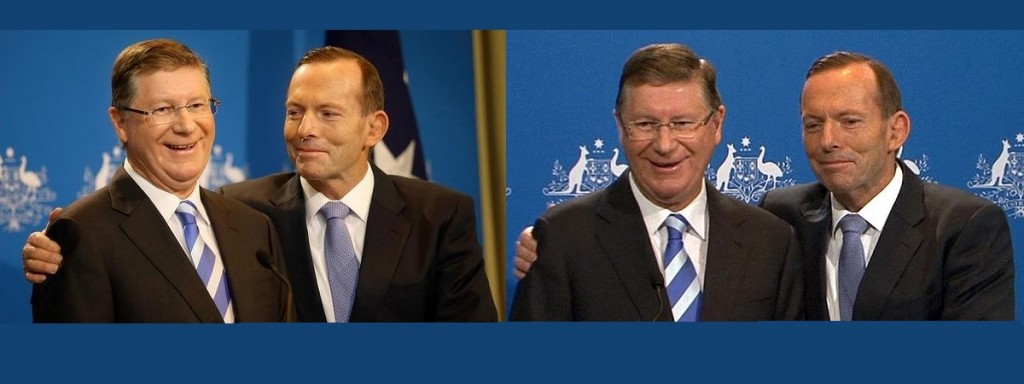A Referendum on Melbourne’s future By Andrew Herington
The Prime Minister has sealed the fate of the controversial East West Link. When Tony Abbott declared the November 29th Victorian election to be a referendum on the project, he gave the winner a mandate – that most precious of things in politics.
If Labor wins, the project is dead. Daniel Andrews’s recent answers have been emphatic. If the Liberals win, it will have the political legitimacy that it has so far lacked. The final hurdle for the project would be whether the planning approval survives each of the three Supreme Court challenges currently underway.
Lend Lease and its consortium partners would still face protracted and well organised community resistance. In the early months, this would focus on sit-ins to prevent the excavation of a huge cutting in the central part of Royal Park – the largest hole ever proposed to be dug in Melbourne.
Denis Napthine has misread the public mood and put all his eggs in one basket, making the tollway the cornerstone of his Government whilst Daniel Andrews has staked his reputation on reversing the hastily signed contracts. The tollroad may turn out to be a very large political hole.
Polling suggests that voters are worried about jobs, education, health and public transport but the hot button issue is the fate of the East West Link. A series of polls have found strong support for spending on public transport rather than roads. Interestingly, two recent polls have found majority opposition to cancellation of the contracts – although this is highly concentrated amongst committed Liberal voters.
It was never meant to be like this. When Dr Napthine took over as Premier he was looking for a symbolic project to re-energise the Coalition Government. He ditched the 2010 commitments by Ted Baillieu and Terry Mulder to oppose the East West Link and build rail extensions to Doncaster and Rowville.
He did this expecting a wave of support from the outer eastern suburbs and motorists generally. This never emerged and the East West Link has remained relatively friendless outside of Government. Marginal seat voters have concerns much closer to home and the $18 billion total price tag has left them wondering why this vast sum could not be spent fixing more significant local problems.
Corners were cut to get the project approved and the design was developed on the run. Millions were thrown at consultants and the legislation changed to get stage one of the project signed up before the election. This deadline was met with days to spare.
It was only achieved by using unprecedented secrecy and a steadfast refusal to publicly validate the claims for the economic and environmental merits of the tollway. If the project was capable of withstanding public scrutiny the Government would be rushing to release these documents to prove its case.
Instead it has made a series of escalating claims for how many jobs will be created and how much time motorists will save.
Originally 3,000 temporary construction jobs were claimed, offset by the loss of 200 jobs in businesses demolished to make way for the massive interchanges at each end of the tunnel. The claim escalated in a series of steps to 7,500 jobs for two stages and the creation of 200,000 jobs across the economy.
The Government claims the tollway will save 90 minutes on a trip from Ringwood to the Airport, – which this is more than the current trip time. The widening of the Tullamarine is now claimed to save another 20 minutes.
The traffic assumptions have been seriously questioned by independent experts and the level of tolls kept a closely held secret. Four recent tollways in Sydney and Brisbane have financially collapsed through unexpectedly low traffic usage.
The contract is said to contain a secret “poison pill” to try to prevent it being reversed. The legality of this is doubtful but the Prime Minister has put paid to this threat by endorsing the election as a referendum.
If Labor wins the election there will be no doubt about its mandate to terminate the project. It can re-direct funding to its public transport priorities and the removal of 50 level crossings causing congestion at numerous locations across Melbourne.
The endorsement of the Prime Minister puts paid to the “sovereign risk” argument against cancelling the contract. The decision to scrap the project would not just be the new government’s doing, but a change endorsed in an election where the major issue was the fate of the project.
Lend Lease told the Court of Appeal that it had spent $60 million so far on the project. This would be a small price to pay to change direction and invest the rest of the $18 billion on higher priority projects with a publicly proven benefit for the community.
It would also be a small price to change direction on how Melbourne develops and protect its renowned liveability by investing in public transport instead of roads.
Andrew Herington is a former Labor Ministerial Adviser now a Melbourne freelance writer who has worked with community groups opposing the East West Link.
A Referendum on Melbourne’s future also published at Public Transport Not Traffic
